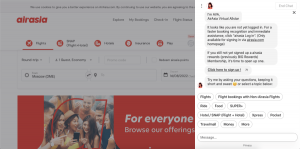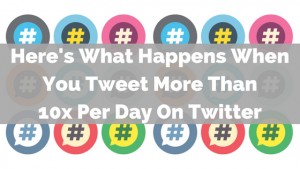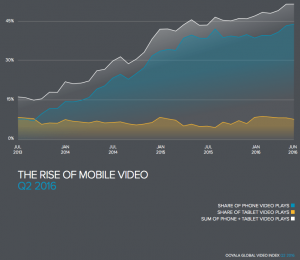If there is one thing that unites us as humans and consumers, it is the desire to laugh. At the end of a long and stressful day, there is nothing more relaxing than sharing in a joke with loved ones or enjoying an example of natural and spontaneous comedy as it unfolds before your eyes.
This distinguishes laughter as a rudimentary and yet universal language, through which we are able to convey happiness and revel in shared experiences. As a result of this, wise and creative marketers have identified humor as a viable tool with which to engage customers and drive higher levels of sales conversions over time.
Using Humor in Video Marketing: 3 Tips for Getting it Right
Before you start attempting to integrate humor into a marketing campaign, however, you should understand that this is best achieved through video or rich media. These mediums enable you to use humor in a specific context, which can be hard to convey and easily misconstrued when it is applied in text format. With this in mind, let’s look at how you can create humorous marketing videos that actively engage targeted consumer groups: –
Use Humor that is Relevant to the Brand and Consumer Base
While humor is a largely generic term, it must have relevance to both your brand and the intended target audience if it is to achieve its aim. This means that even the funniest and most creative humor in the world will fail if it has been contrived and fails to suit your business philosophy or the tastes’ of customer demographics. The creation of a humorous marketing video therefore starts with an exercise to understand a specific target customer profile, before drawing elements from this that are aligned with the brands’ philosophy. Then you can create ideas and storyboards that use relevant humor.
One of the best examples emerged in the UK recently, when Wigan Borough Council commissioned a video to market their ‘Wigan Works’ campaign. Employing the services of a leading designer, the result was a hilarious video that spoofed the strong work-ethic and sense of integrity that is synonymous with locals. Designed to promote growth in the city, raise awareness among local residents and drive investment, it used subtle humor that resonated with the audience while also underlining the unique qualities of the region in a fun and engaging manner.
Draw Humor from your Customers to Drive the Campaign
With knowledge of your brand requirements and typical customer profile, the next step is to ensure that you are as creative as you can within these constraints. If you are marketing to a carefully targeted audience, however, why not use this demographic as a crowdsourcing platform to generate new and inventive ideas? While you may need to edit any subsequent concepts to suit the wider brand message, achieve legal compliance and engage as wide an audience as possible, utilizing your customers has huge benefits as it presents humor that is unique and more likely to resonate with viewers.
There are numerous examples of this, many of which involve the 2 Hundred Oaks Brand Management firm. This company regularly incorporates client and consumer humor into its campaigns, encouraging the highest levels of creativity and engagement through the process. Take the Louisiana based ‘Slap Ya Mama Photo Bomb Ya’ contest, which encouraged social media followers to create inventive product placement videos and share these online. This type of approach creates an interactive and creatively diverse campaign with customers at its core, optimizing your reach as a brand and generating interest across multiple platforms.
Share your Video across Multiple Platforms
While the days of spending millions of dollars on television advertising space are far from over, brands tend to market themselves across a number of integrated, rich media platforms in 2015. Mediums such as VOD’s (videos on demand) are particularly popular, as they can be uploaded and shared across multiple social media platforms while they also have less legal compliance issues to negate once they are published. From a company and marketing perspective, this enables you to create cost-effective videos that are not bound by creative restrictions and can be shared across a wide and targeted range of sites.
So how exactly should you share these posts? While the final strategy will depend to some degree on the nature of the content and your audience, as a general rule you should consider uploading a humorous marketing video on YouTube and Viddler before sharing these socially across multiple social media sites including Facebook, Twitter and Tumblr. It may also be worth reaching out to independent humor bloggers, who have an established reader base and excellent social sharing signals. These outlets are always looking for original and diverse content that is relevant to their audience, so offering them a chance to host and share your video will be mutually beneficial.
(319)






